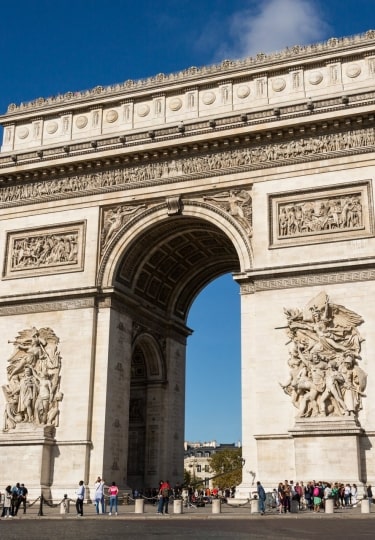It can feel like there are little else but famous landmarks in Paris, especially amid the regal, tree-lined avenues and cobbled lanes of the French capital’s historic center.
This could have something to do with how the City of Light, with its chic style, peerless cuisine, and dramatic history has achieved a kind of cultural pre-eminence in our collective imaginations. Or maybe it’s a straightforward Gallic penchant for flamboyance.
And while it’s extraordinary how familiar we feel, even before visiting, about places such as the Eiffel Tower or Notre-Dame Cathedral, what’s even more remarkable is seeing these famous monuments in Paris woven into the urban tapestry. Little things like how the light falls through the Louvre’s glass pyramid, or the color of the Seine on a spring afternoon.
Charge up your camera battery, and prepare to come face to face with extraordinary cultural treasures that truly live up to their billing.
Here is a list of 13 famous landmarks in Paris.
Eiffel Tower
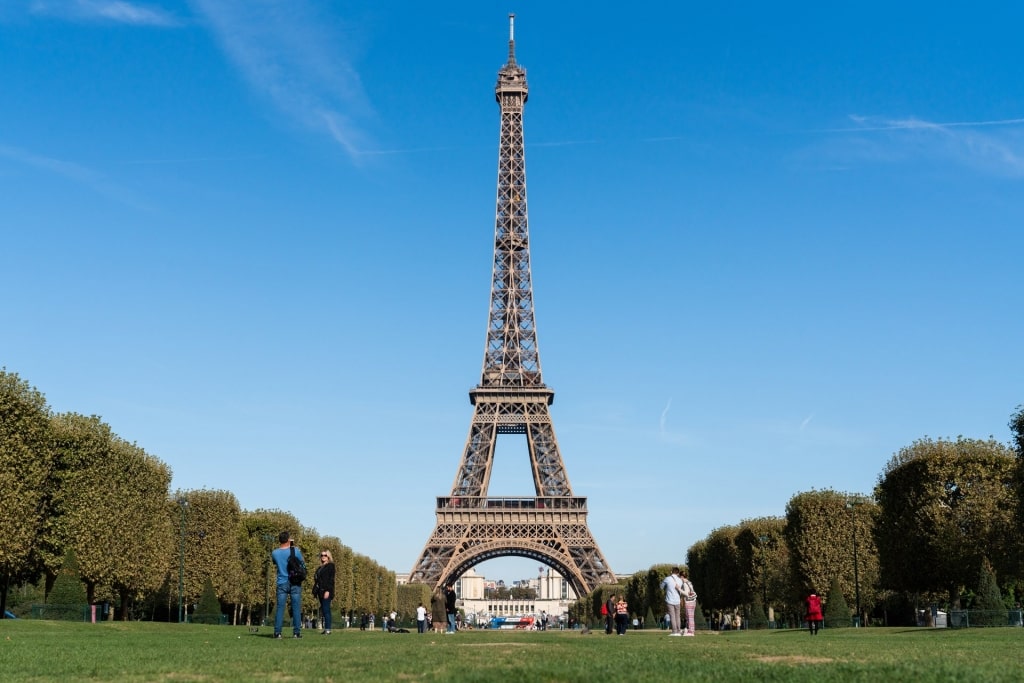
Eiffel Tower
Like the Statue of Liberty (also French), the Eiffel Tower is one of the world’s best-known sights. This iron needle is the highest point in the relatively low-rise center of Paris, elegantly planted in the Champs de Mars public park.
Gustave Eiffel’s wrought-iron structure was designed to be the centerpiece of the 1889 Paris World’s Fair. When it was unveiled it became the world’s tallest building. The plan was to have the tower stand only until 1909, but its popularity (and usefulness as a radiotelegraph post) ensured its permanence.
Be sure to book in advance if you intend to ride the elevators (or take the stairs) to the tower’s various viewing platforms. You’ll be forgiven for being distracted from the view of the city’s elegant urban planning by the Michelin-starred menu at the Jules Verne restaurant on the tower’s second floor.
Arc de Triomphe
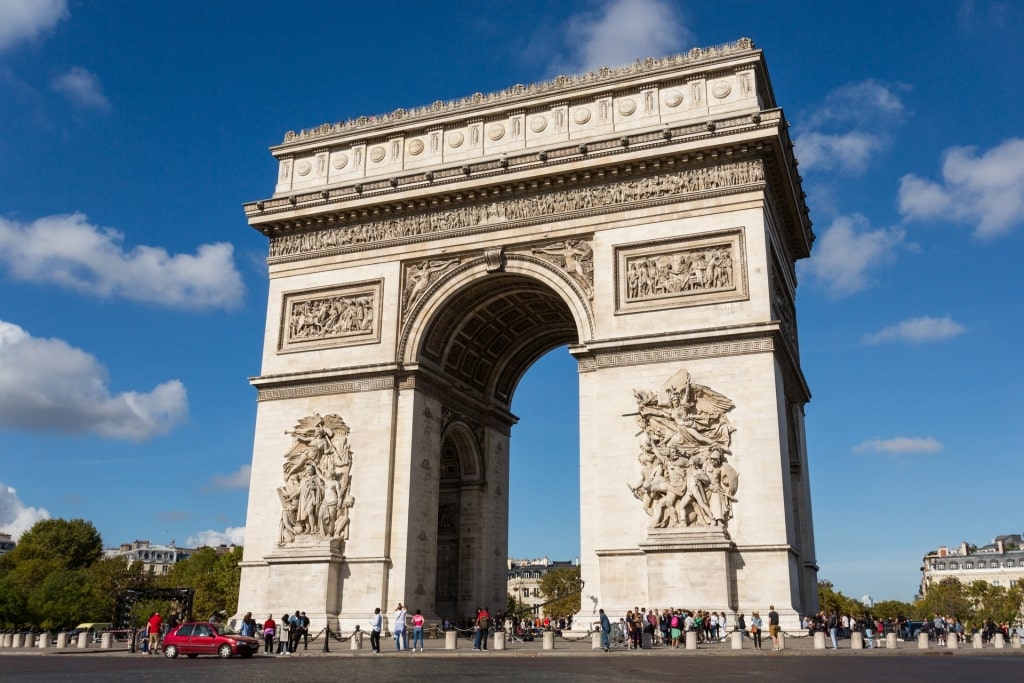
Arc de Triomphe
Built to commemorate the success of the French at the Battle of the Three Emperors—Napoleon’s greatest military success—the Arc de Triomphe is much more than a decorative roundabout at the northern end of Avenue des Champs-Élysées.
Perhaps the country’s most potent patriotic symbol, the world’s largest triumphal arch took 30 years to build and was modeled after the Arch of Constantine in Rome.
The three-decade construction schedule was less about any architectural difficulties and more about a hiatus resulting from Napoleon’s unseating as emperor. However, 19 years after the French had downed tools, the work was finished by King Louis-Philippe I and dedicated to the French armed forces.
The arch is engraved with famous victories and the names of French generals, while beneath is buried an “Unknown Soldier”. It is possible to climb 300 steps to the viewing platform at the top of one of the most famous monuments in Paris, for far-reaching views across the rooftops while 2CVs and scooters circle below.
The Louvre
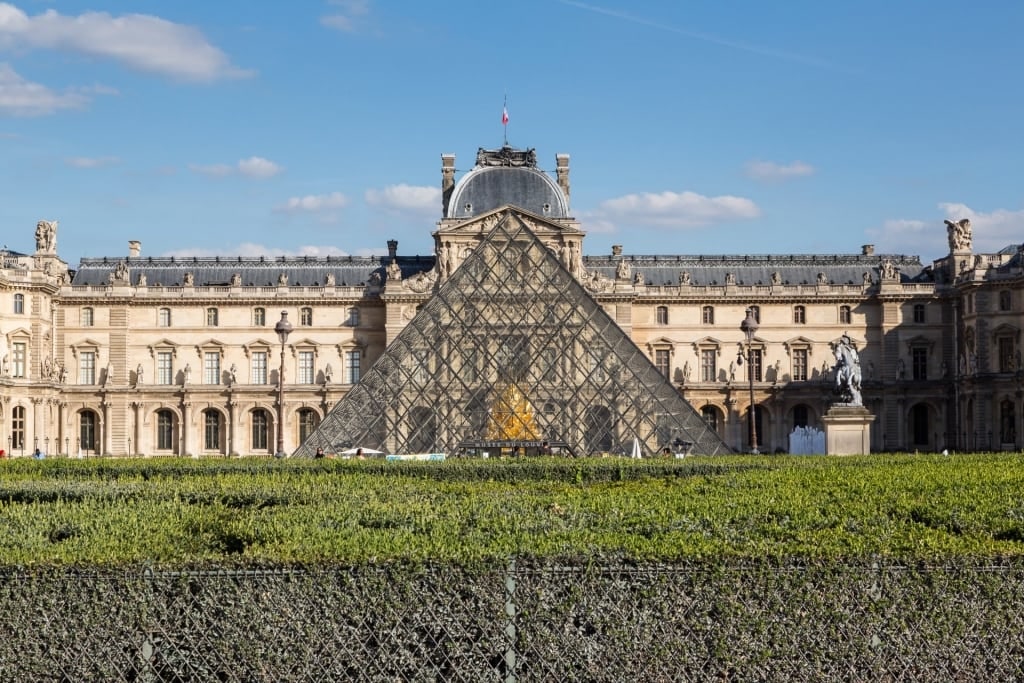
The Louvre
Another of the most famous landmarks in Paris, the Louvre is an intrinsically Parisian building and brand (despite its most famous treasure, the Mona Lisa, being Italian). Architect I. M. Pei’s modern glass pyramid, enclosed within the baroque embrace of a former 12th-century fortress, is a breathtaking juxtaposition to witness in person.
On your first visit, you might have your heart set on seeing the Mona Lisa. It’s an achievable goal but bear in mind that the viewing space in front of the world’s most famous painting (in what is arguably the world’s most famous art gallery) can become crowded. If your schedule allows, consider an evening visit on Wednesday or Friday instead.
Of course, if you don’t fancy the Mona melee, the world’s largest museum has more than enough alternative treasures with which to slake your cultural thirst. There’s the Venus de Milo, the atmospheric The Raft of the Medusa, or the imposing Winged Bulls from Mesopotamia.
Read: Summer in France
Grand Palais
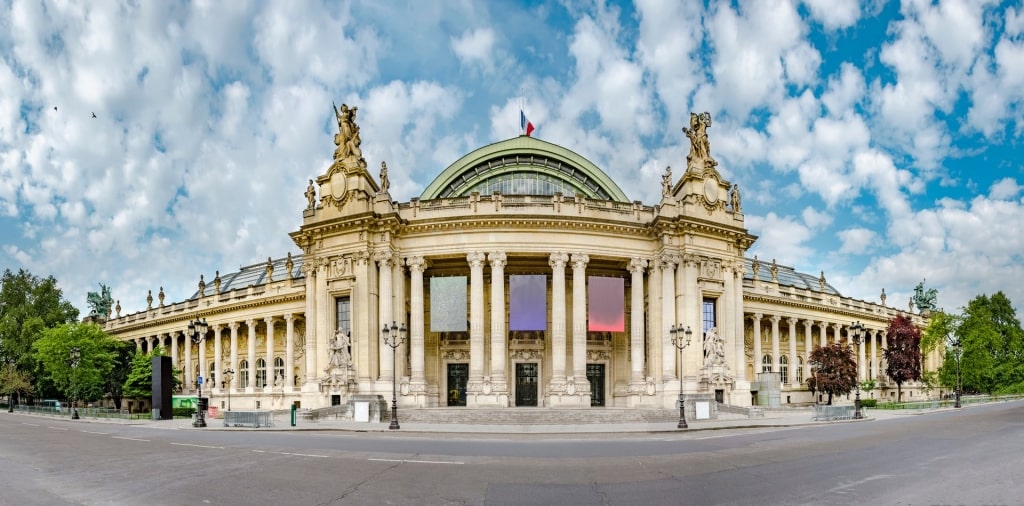
Grand Palais
One of the famous monuments in Paris that owe their existence to an exhibition—in this instance the 1900 Universal Exhibition—the Grand Palais des Champs-Élysées (to give it its full title) is the haughtiest building in the central, extremely snooty 8th arrondissement.
The imposing art nouveau structure has a striking resumé. In the past, it has been a WWI military hospital, a Nazi truck depot, and the headquarters of the French resistance. Today, it is still used as an event space, although beneath Europe’s largest steel and glass ceiling you’ll also find a science museum and the engrossing exhibitions of the National Galleries.
Notre-Dame Cathedral
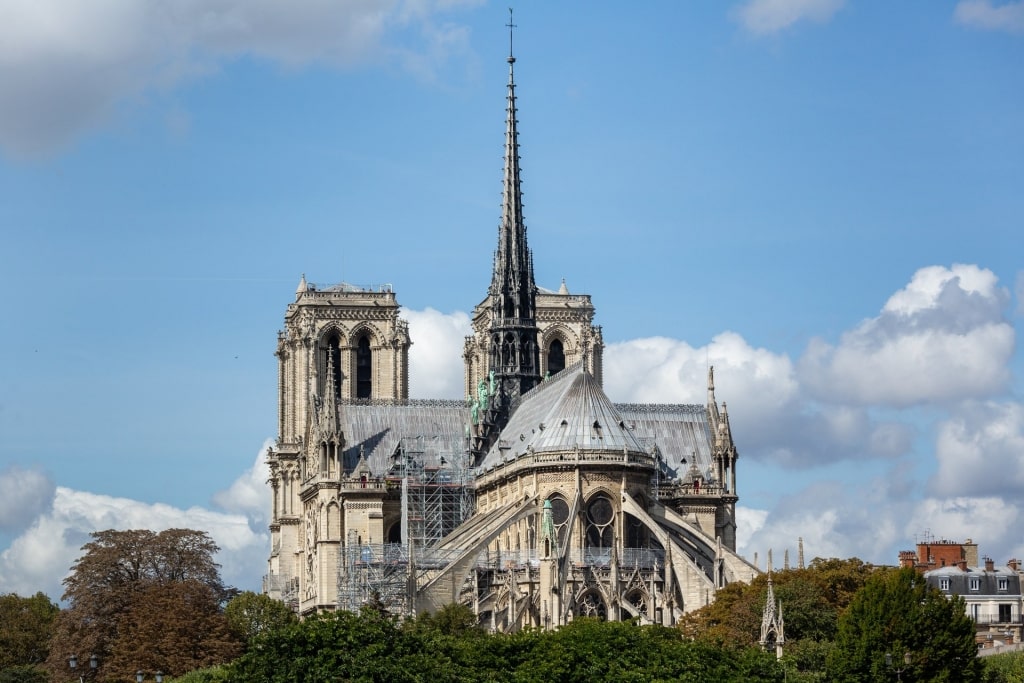
Notre-Dame Cathedral
One of the most beautiful churches in the world, robed in a truly outsized aura, Notre-Dame Cathedral is a 12th-century French Gothic edifice brooding on an island in the Seine.
Its instantly recognizable rectangular towers, profusion of flying buttresses, and spectacular rose windows are revered by the religious and non-religious alike. Which isn’t to say there haven’t been some bumps along the road.
During the French Revolution, the interior of the cathedral was ransacked. However, after the outpouring of feeling in the wake of the devastating fire on April 15, 2019, it’s clear that the cathedral remains, for many, intrinsic to their sense of French national identity.
Opera Garnier
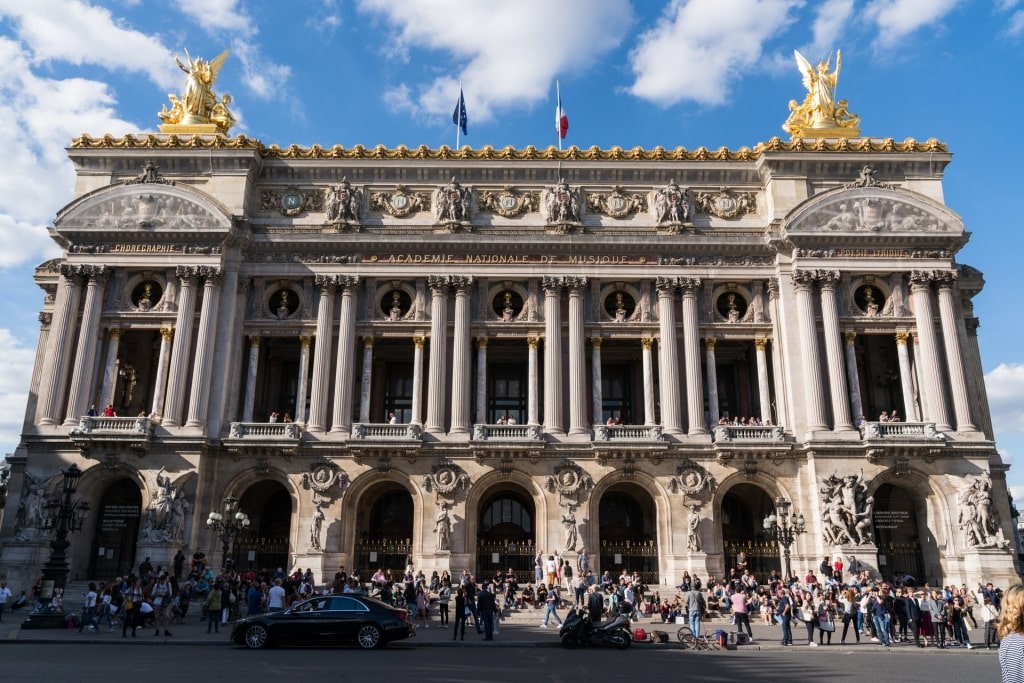
Opera Garnier
Built in the 19th century, the Opera Garnier was created to be the home of the Paris Opera. The opera moved to the more up-to-date Bastille Opera House in 1989, leaving the Opera Garnier to change its name officially to the Palais Garnier and become more of a home for ballet.
However, what happens on stage at the Opera Garnier is almost irrelevant, so distracting is the marble and gilt grandeur of the Napoleon III-era interior of this, one of the best theaters in the world.
You can take yourself on a self-guided tour (complete with tablet guide) of this dazzling interior, with its Belle Epoque galleries, immensely grand staircase, and horseshoe-shaped auditorium with a ceiling painted by Marc Chagall.
On your travels, you’ll also discover a library and the Musee de l’Opera museum within. Don’t forget to check out Box Five, which is dedicated to Gaston Leroux’s Phantom of the Opera; it’s there that the 1909 story is set.
Place de la Concorde
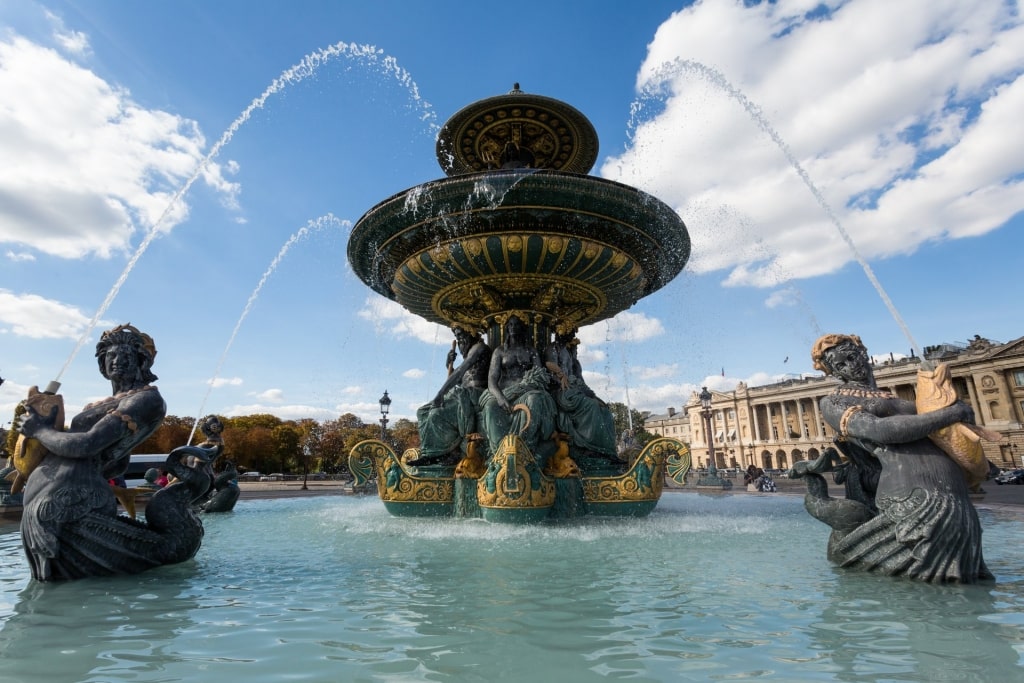
Place de la Concorde
One of the city’s main public squares located at the eastern end of Les Champs, the Place de la Concorde was once known by another name: the Place de la Revolution.
During the French Revolution, the Place de la Concorde was selected as the site for the public executions of the King and Queen of France (and many others). The revolutionaries pulled down the statue of Louis XV, for whom the square was originally named, and a guillotine was erected.
It’s this bloody past that led to the renaming of the square as Place de la Concorde. Its original regal swagger remains, however, with statues at each of the square’s eight angles, monumental fountains, and the yellow granite obelisk centerpiece that once stood at the entrance to Egypt’s Luxor Temple.
Champs-Élysées

Champs-Élysées
The world’s most famous street? The Avenue des Champs-Élysées (shortened to ‘Les Champs’) is both stately thoroughfare and close to a mile of supreme retail therapy.
Les Champs, as the flagship address for retail super-brands both shiny new and classic, plants the flag for the French capital’s claim to be the best shopping city in Europe. Beneath the plane trees, you’ll find every major luxury brand represented.

Champs Élysées
Duck beneath legendary Ladurée’s gilt and verdigris awning for some sweet sustenance while browsing. And be sure to save plenty of time to gaze upon the alluring window displays, framed by art deco lines, of the flagship Louis Vuitton store, listed as a historical monument.
But Les Champs is about more than just fancy bags. It’s a gathering place for citizens, a Tour de France finishing line, a New Year’s Eve singalong spot, and a World Cup-winning frenzy. If you’re there on the first Sunday of the month, Les Champs is also blissfully car-free for the day.
River Seine
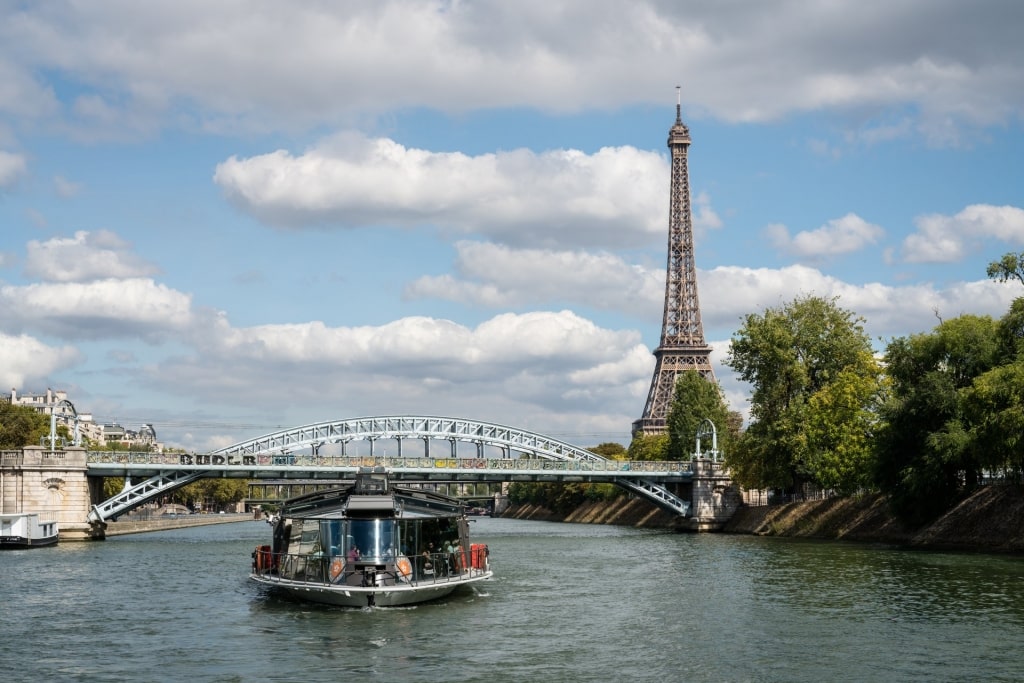
River Seine
The River Seine is one of the most famous landmarks in Paris. It is more than just a landmark that Paris is famous for, of course—its very presence attracted the proto-Parisians to the site when Place de la Concorde was just a swampy patch of grass.
Today, this broad, silvery-green conduit of history and sleek restaurant boats divides the grey mansard roofs of Paris into Left and Right Banks. The eight miles of river within the city boundaries has been awarded UNESCO World Heritage status. Some of its 37 bridges share that designation, such as the Pont Neuf—the city’s oldest standing bridge.
For the citizens of Paris, its spacious riverside walkways offer a calm respite from the capital’s busy streets as well as a place to cool off in July. The Seine is lined with many of the city’s finest buildings and a saunter along its route, encountering artists selling their wares and the occasional open-air book store, is a must when visiting the city.
Basilica of the Sacré-Coeur

Basilica of the Sacré-Coeur
While located in the relatively distant 18th arrondissement, the exotic white domes of the Basilica of the Sacré-Coeur (sacred heart) vie with the Eiffel Tower as the city’s most eye-catching landmark.
Inspired by San Mark’s Basilica in Venice, the Sacré-Coeur caps the higgedly-piggedly, bistro-busy lanes of the trendy Montmartre neighborhood. You’ll find the church’s Roman-Byzantine architecture at the conclusion of 222 steps leading up from verdant Square Louise Michel.
Sacré-Coeur is the country’s second most visited religious monument after Notre-Dame. Take a look inside and you’ll be bowled over by France’s largest mosaic (5,166 square feet), or climb the dome. For many, though, the panorama of Paris from the top of the 222 steps is all they require.
The Centre Pompidou
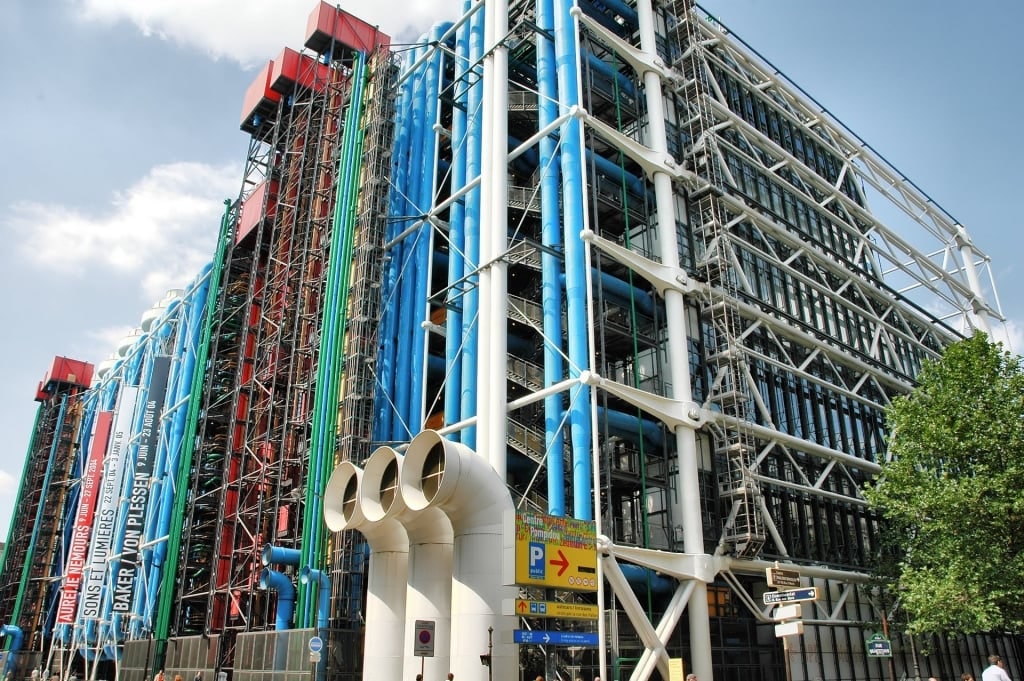
The Centre Pompidou
The Centre Pompidou is, ostensibly, a gallery created by President Pompidou as a flag-bearer for Paris’s contemporary art.
It’s an enjoyably quirky building to admire, having been built by architects Renzo Piano, Su Rogers, and Richard Rogers in the “high tech” architecture style. Its industrial facade, for some, hasn’t perhaps aged as well as it might have, but it remains distinctly original amid the primarily classical style of the city center.
Inside is as busy as the exterior with a cinema, major public library, and a program of concerts—just some of the offerings on hand within this beloved cultural center. And then there’s the permanent collection of modern art—one of Europe’s largest—with important works by Man Ray, Duchamp, and Picasso. Head up the sixth-floor terrace, too, for one of the best views in Paris.
Musée d’Orsay

Musée d’Orsay
Musée d’Orsay is one of the gorgeous, outsized buildings left over from the Paris Universal Exhibition of 1900. It’s also another utterly wonderful Parisian art gallery mostly overshadowed (at least in some visitors’ minds) by the nearby Louvre.
They’re missing out. Within France, the d’Orsay is one of the most famous monuments in Paris and almost as instantly recognizable as the Louvre. A former railway station positioned on the Left Bank, its Beaux-Arts industrial good looks recall those of the Grand Palais.
If you’re a fan of Impressionism, then the d’Orsay should be your first stop. Beneath its high-ceilinged, curving corridors you’ll find names such as Renoir, Manet, and Van Gogh. On the top floor, the masterpieces hanging on the walls include Renoir’s Dance at Le Moulin de la Galette and Paul Cézanne’s The Card Players.
Pont Alexandre III
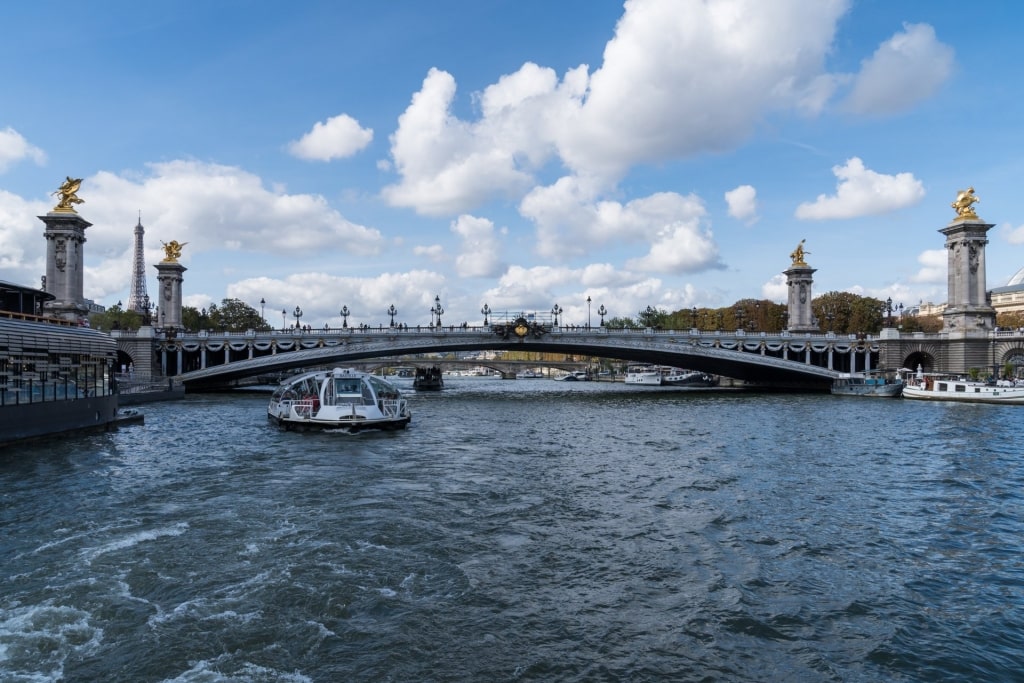
Pont Alexandre III
If Marie Antoinette were visiting Paris today and could tell us which was her favorite bridge over the Seine, she’d probably, without hesitation, choose the Pont Alexandre III.
It’s not just that this bridge, connecting the Grand Palais with the Invalides military history complex, is named for a former Tsar who sealed the Franco-Russian Alliance (since expired). It’s that the bridge is weighed down with golden nymphs, cherubs, and winged horses.
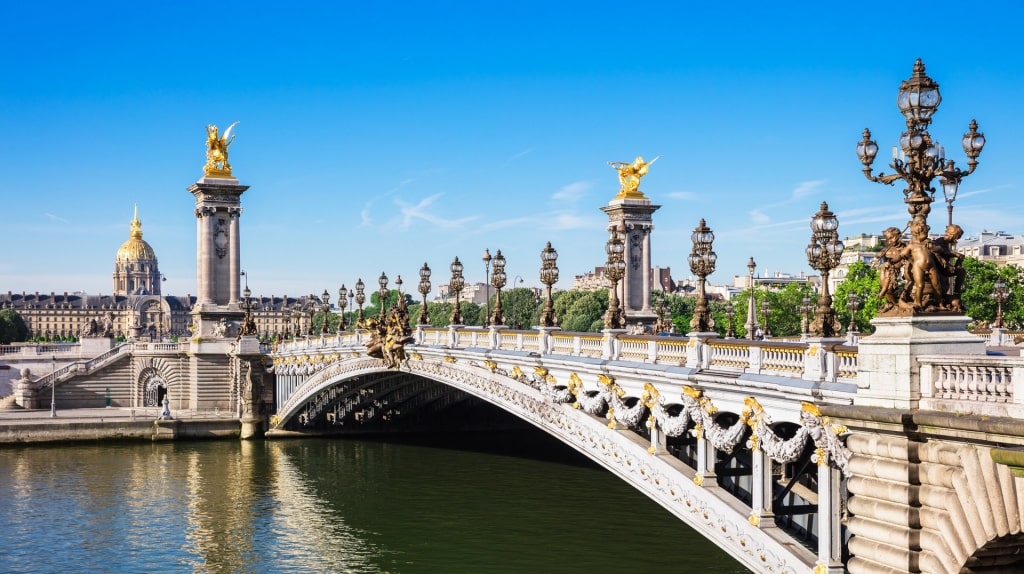
Pont Alexandre III
Designed to harmonize with the architecture of the Grand Palais, the Pont Alexandre III is among the most famous landmarks in Paris. Underlying its gaudy triumphalism is a coup of 19th century engineering. The engineers succeeded in meeting a brief that insisted the bridge did not obscure the view of the other French landmarks on either approach.
The extrovert style of the Pont Alexandre III has earned it countless movie credits, while its historical and cultural importance has seen it deemed a national historic monument. It’s a little like Paris—there’s a lot crammed in, but, here, it all seems to just fit perfectly.
Read: Best Things to Do in Paris With Kids
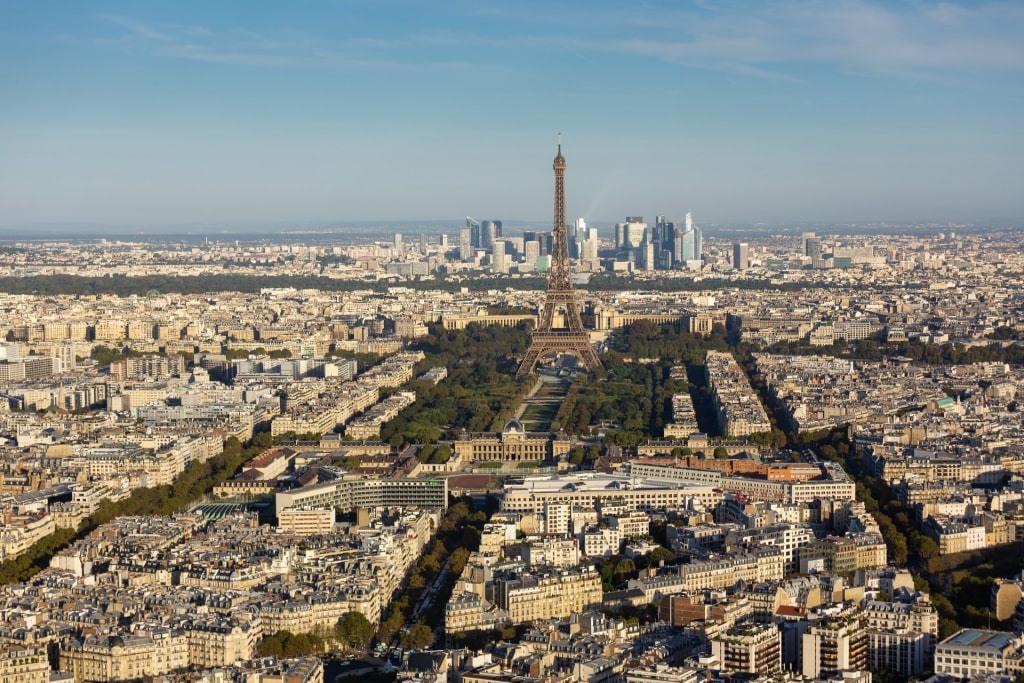
Paris
Experience all of these famous landmarks on a cruise to Paris. From the avenues of the City of Light to the glamorous beaches of the Côte D’Azur, France is one of the world’s most enchanting destinations.
Browse our cruise itineraries online and book an incredible vacation to France.
